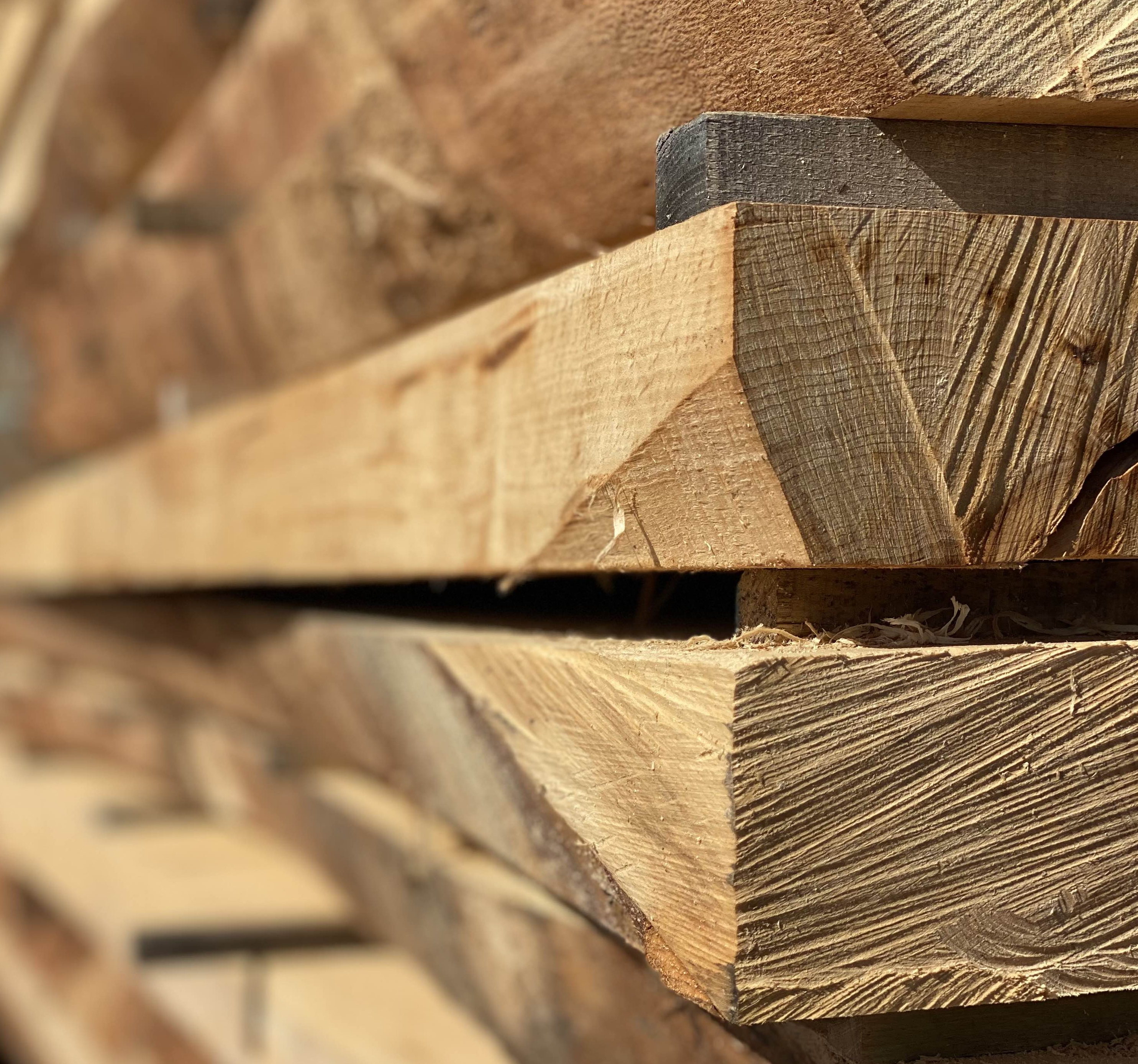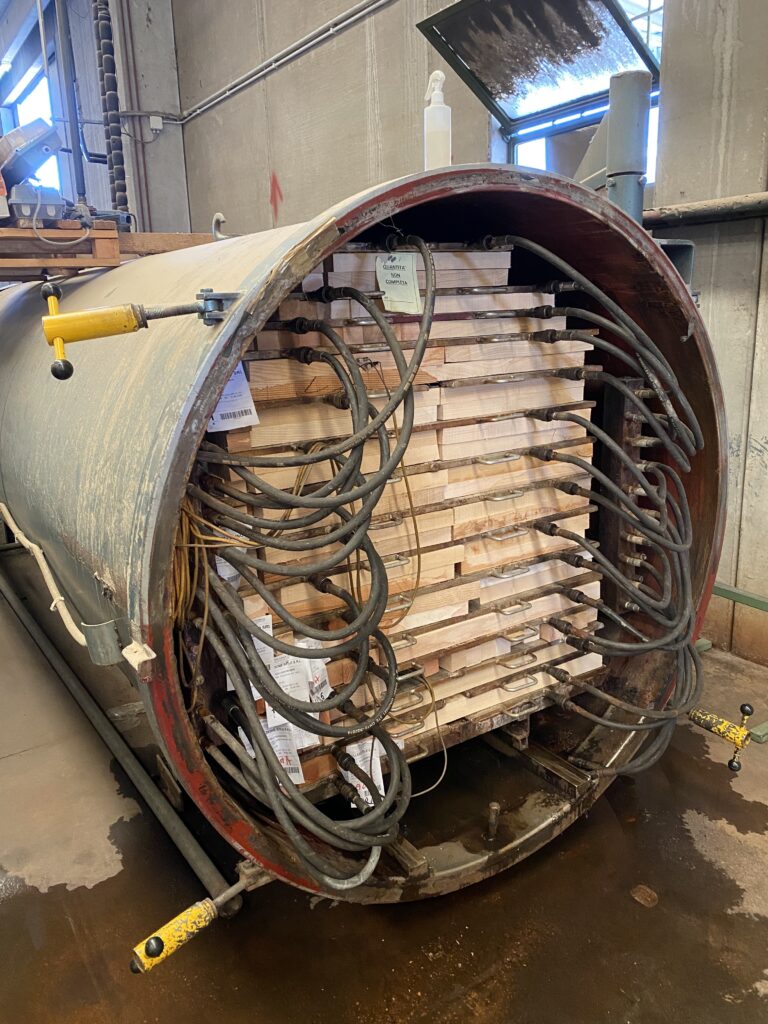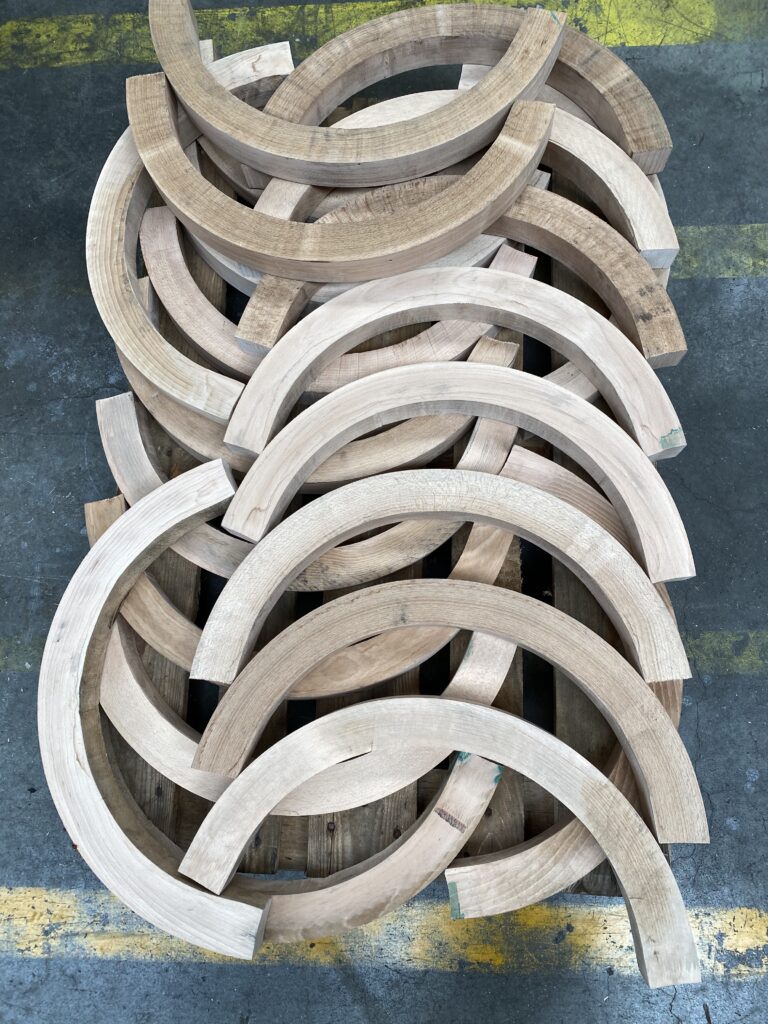
The natural rhythm of beauty: telling about living materials, such as wine, or… wood
I publish below something that apparently has little to do with wine: the story you are about to read came out of a collaboration with the company Passoni Sedie in San Giovanni al Natisone, in the province of Udine, in the heart of the ancient chair craft district.
It was reading Custodi del Vino, my second book, that inspired Tommaso Passoni, now head of the company, to ask me to try my hand at telling the story of the wood supply chain behind their designer chairs in my own style. So I went in person to visit that triangle of hills and vineyards on the border with Slovenia to observe, to know, to smell, to touch in the true sense of the word the materials, the people, the inspiration of these Italian artisans. The result was this story that I decided to publish on this blog as well, because wood and wine have in common the fact that they are living materials and continue to breathe, adapt and change throughout the process of transformation and ennobling. I hope these words will inspire you to look with curious eyes at the world of craftsmanship, art and creativity in which wine and design are protagonists in our country. Enjoy your reading!
The breath of wood
I look at the ash tree trunk sectioned into long slabs lying on the forecourt of the Premariacco’s sawmill company, I observe what remains of the bark streaked with dark brown, ash gray and soft green, I caress its roughness, its fine but pungent grain, I smell the scent of the forest, the memory of resin and moss that it still carries, a smell almost balsamic but sweet at the same time, it reminds me of walks in the woods in search of chestnuts when I was a child. Interrupting that moment of ecstasy is a jarring question: “Won’t it be a bit of a violence to want to bend nature, this tree that has been cut down, to human needs? Tearing it from the earth and turning it into something it is not?” Suddenly those wooden slabs are mutilated parts of an unrecognizable body. Then I think of the Genea Passoni chair, the design object this log is destined to become: something so beautiful, sinuous and welcoming cannot be born out of violence.
I have to investigate. So begins my journey through the metamorphosis of those oak and ash slabs that I loved at first sight on the sawmill forecourt. I discover that someone long before me had fallen in love with that wood at the origin, in the forests of Slavonia and Austria, patiently going about choosing the trees as favorite children, with a project of beauty in mind. I meet Marcello, almost 80, who here in the centuries-old chair district of Friuli, among the hills and vineyards of Manzano, San Giovanni al Natisone and Corno di Rosazzo , is known as the king of oak. For more than half a century, Marcello has been in love with trees and their essences, to such an extent that once he has selected the best pieces, transported them, prepared them for processing, seasoned them, he sometimes reconsiders and no longer sells them, he still keeps them with him a little longer, in his warehouse to rest, to breathe, to mature. Marcello and Passoni Design’s other wood suppliers carefully choose a material that is alive and stays that way throughout the sustainable supply chain; they handle it as if it were their own child: with extreme care it is put out to dry in the Friuli sun, immediately placed out of the rain and humidity when the weather changes. The entire supply chain that contributes to the creation of a Passoni chair works in harmony with nature: for each of these “favorite” and predestined logs for Italian design, at least two more new trees are planted at the origin, according to Fsc certification guidelines. Marcello, the king of oak, explains to me that the timing of nature must be respected, you cannot harvest wood all the time, you need to know the rhythm of the seasons, you need to wait for the cut wood to rest and stabilize, and each type, but not only, even each part of the log has different needs that only those who observe with love can recognize.

From that sawmill yard, the wood passes from hand to hand, from company to company: it takes time, it takes care, it takes respect. Those roughness, those initial earthy scents are transformed along the way gradually: after the wood has matured it is gently heated and dried in vacuum steam ovens to enhance its flexibility and give it greater strength; it is like an athlete, it needs both strength and patience. The drying company’s shed, which only handles this step, is like a wood spa. The scents of bread crust, spices, citrus, and incense caress your nostrils, I watch the regular pieces of ash come out of that cylinder of heat and steam and I am fascinated by David’s expert hands controlling the humidity and temperature of the wood through probes and gauges, as a doctor would do with his patients by testing their blood pressure and listening to their heartbeat. I listen, too, I bring my ear close and, despite the loud buzz of work and human activity around me, I hear a faint crackling, an imperceptible settling rumble: I take it as a sigh of relief and relaxation from the ash tree that has just emerged from the sauna.
The journey of our pieces of wood is only halfway through, and already the image of mutilation and violence that had leapt into my mind at first is only a distant silly thought, a prejudice whose burden I gladly remove from my heart. What I have seen so far is sublimation: it is dozens of hands and minds concurring in Passoni’s ultimate vision through work that is made of care and love. But the magic of senses and craft is not over.

It is necessary for some of these pieces to take a curved shape to accommodate our limbs, our backs, our arms. The art of curvature is something fascinating and philosophical. Watching a long wooden parallelepiped become a cylindrical arc through the gentle force of steam and the mighty force of metal levers is like witnessing the change of direction: bend without breaking, meekly accompanying the curves of our existence knowing that the only way to survive is the ability to take on a new form, to change, without resistance. Wood teaches us much more than this: in fact, I have discovered that by its characteristic, once the bending process has begun, the wooden rod, if not properly anchored in the desired shape through spacers, would continue to bend, becoming a circle. Wood, unlike iron or other materials, does not tend to return to its original shape when bent, but continues to follow its intended direction. It is malleable, it is docile, it follows the curves of life without resistance, it allows itself to be shaped and, thanks to all the care it has received from seasoning to drying, it does not break. The craftsmen I met on this journey raised and prepared the wood for this hard test, that of bending: they chose it, prepared it, gave it time to mature, strengthened it, trained it. And now in Passoni’s hands it can become beauty, it can return this care and love by becoming a wooden embrace that welcomes us and can even give us back our time: the time we take to sit and rest, to enjoy a memorable dinner, the time that never passes when we sit and wait for an important answer, for a crucial meeting, the time that is never enough of concentration during work, the time we indulge abandoned in the chair in listening to a song that moves us, at the end of a busy day. I caress the back of this chair and that roughness of nature has become silk, that scent of wood has become sweet and almondy, from wild to refined, that fragrant crackle of ash has become a barely perceptible crunch under my fingers: through the beauty of this chair breathes the life of wood in an eternal moment. There is no violence, no constraint or distortion in this long journey of hers: there is love and dignity. There is the art of ennobling nature through ingenuity, there is creativity, there is craftsmanship, there is life. A Passoni chair is alive, it breathes, it accompanies you in your daily life.


